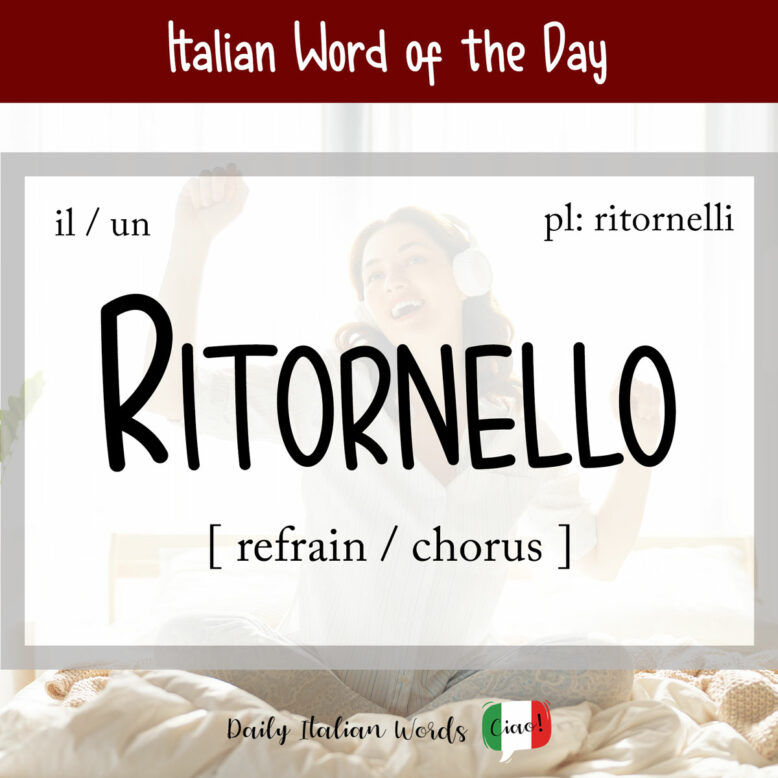Have you ever caught yourself tapping your foot or nodding your head to the irresistible rhythm of a song’s memorable chorus? Perhaps you’ve felt that indescribable rush of energy when a crowd unites in singing the powerful refrain of an anthem like Fratelli d’Italia. Well, amici miei, let’s give a resounding applause to a charming linguistic treasure that frequently steals the spotlight in our musical encounters: the Italian word ritornello!

The word ritornello in Italian has an intriguing etymology. Thought to be derived from the Italian verb ritornare, meaning to return, it signifies a refrain that returns repeatedly throughout a musical composition. With the addition of the diminutive suffix -ello, it assumes the literal meaning of “the little thing that returns“.
Because it is a masculine noun, it takes the following definite and indefinite articles:
- il ritornello = the refrain / chorus
- i ritornelli = the refrains / choruses
- un ritornello = a refrain / chorus
- (dei) ritornelli = (some) refrains / choruses
Il ritornello di questa canzone è molto orecchiabile, non trovi?
The refrain of this song is very catchy, don’t you think?
The word ritornello has an interesting origin in the world of music. It first appeared in the 14th century, originally referring to the final lines of a madrigal. However, as time went on, its meaning expanded to encompass a recurring musical passage, especially in the realm of Baroque concertos and operas.
Over time, ritornello has become a widely recognised term in music theory and composition, both in Italian and international musical vocabulary.

Just like the English word refrain, ritornello can also refer to a comment or complain that is repeated ad nauseam.
Smettila con questo ritornello!
Stop going on and on!
Heather Broster is a graduate with honours in linguistics from the University of Western Ontario. She is an aspiring polyglot, proficient in English and Italian, as well as Japanese, Welsh, and French to varying degrees of fluency. Originally from Toronto, Heather has resided in various countries, notably Italy for a period of six years. Her primary focus lies in the fields of language acquisition, education, and bilingual instruction.


